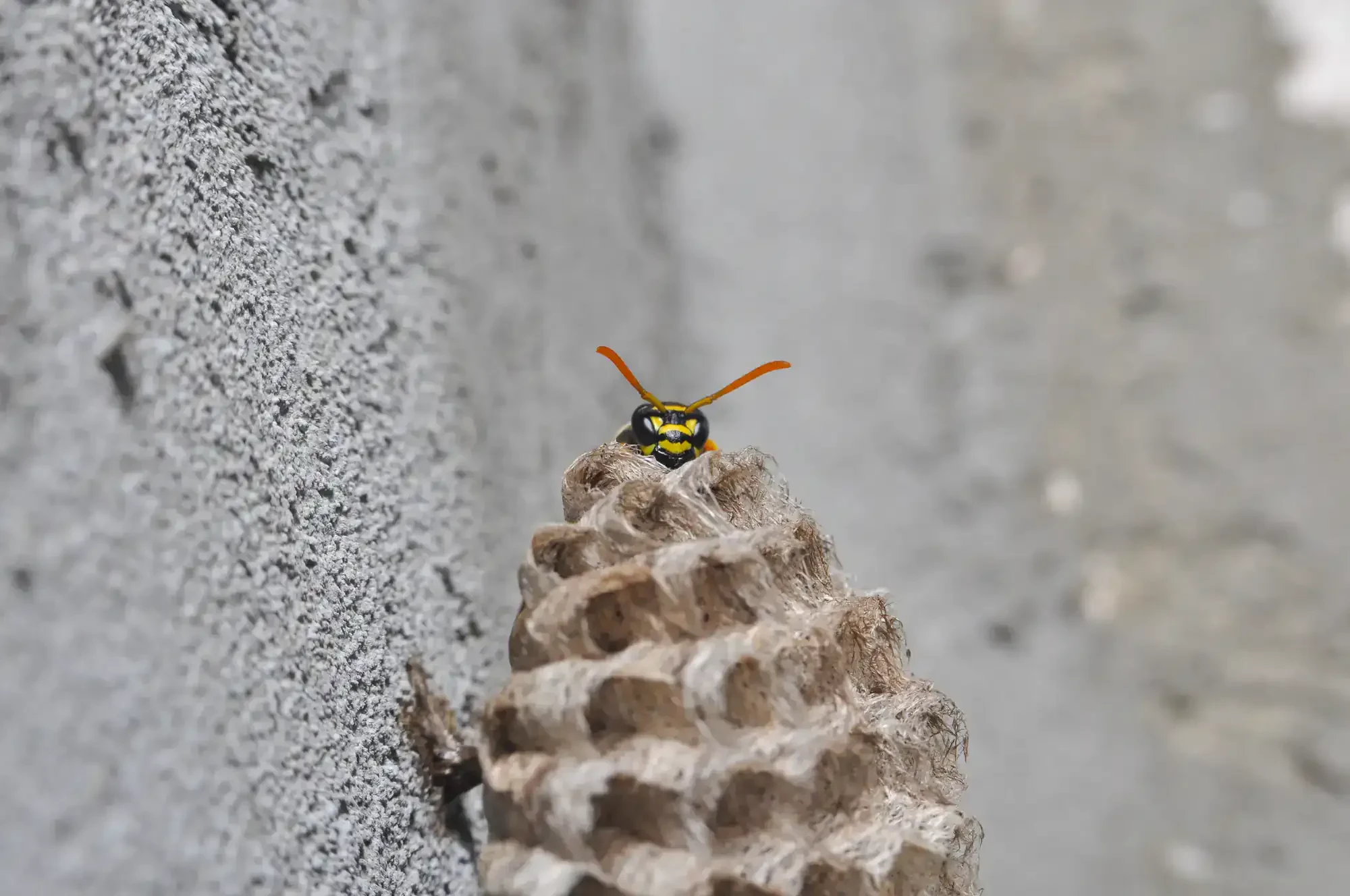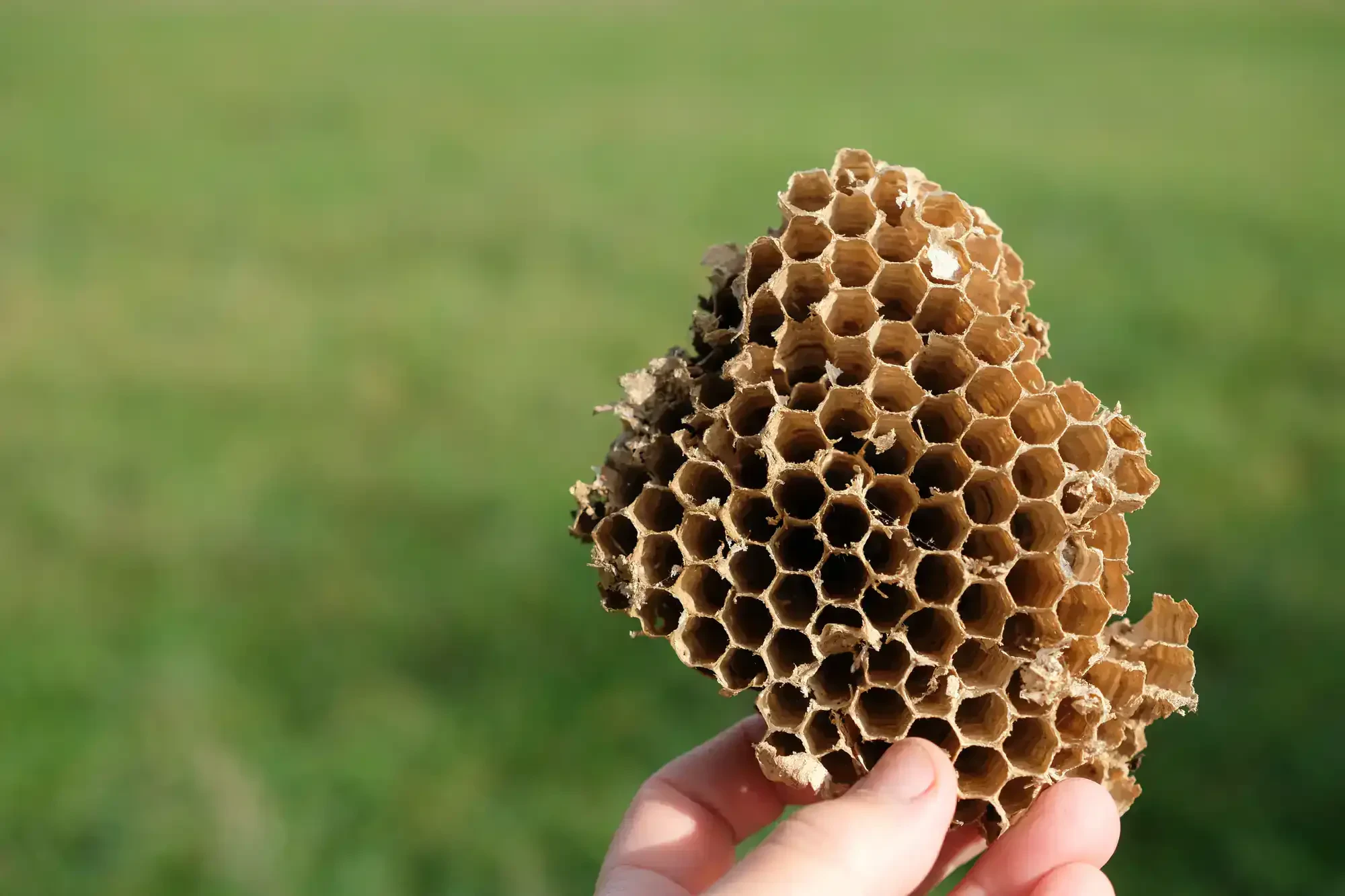
Hear from Our Customers

You’ll get your outdoor space back without the constant worry of painful stings or aggressive swarms. No more watching your kids play from a distance or avoiding your own backyard because hornets have claimed territory near your home.
Our complete hornet removal process eliminates the entire colony—not just the visible nest. That means no stragglers returning to rebuild, no hidden larvae developing into next season’s problem, and no wondering if the job was actually finished.
When we’re done, you can use your deck, tend your garden, and let your family enjoy your property again. The peace of mind that comes with professional hornet control means you’re not constantly scanning the eaves or listening for that threatening buzz every time you step outside.
We’ve been serving Goodrich residents since 2005, back when this tight-knit community was even smaller than today’s 2,000 residents. Roger brings 26 years of pest control experience to every hornet removal job, understanding exactly how Michigan’s aggressive bald-faced hornets behave and where they like to build their nests.
We’re not the big corporate pest control company that requires multiple appointments just to get an estimate for an urgent hornet problem. When you call us about hornets near your family, we respond like the local business we are—because we live here too.
Our integrated pest management training and awards with Angie’s List and Home Advisor reflect our commitment to doing this work right. You’ll work with the same experienced technician year after year, not a rotating cast of part-time college students who might not recognize the difference between beneficial bees and dangerous hornets.

We start with a thorough inspection to locate the nest and identify exactly what type of stinging insect we’re dealing with. Michigan has several species that homeowners often confuse with hornets, and the treatment approach matters for both safety and effectiveness.
Next comes the targeted treatment using professional-grade materials that reach deep into the nest structure. Unlike store-bought sprays that only kill surface insects, our approach eliminates the entire colony including larvae and adults hidden inside the nest walls.
The removal happens after we’ve confirmed the colony is completely eliminated. We safely extract the nest and check for any secondary nesting sites that might have been missed. Finally, we seal entry points and provide recommendations to prevent future hornet problems around your Goodrich property.

Ready to get started?
Our hornet removal service includes complete nest elimination, not just a quick spray-and-hope approach. You get professional identification of the species, targeted treatment of the entire colony, safe nest removal, and prevention recommendations specific to your property.
In Goodrich’s rural setting, hornets often build nests in tree branches, under eaves, and in quiet corners of barns or sheds. Our experience with local properties means we know where to look and how to access difficult locations safely. We bring the right equipment for second-story eaves, tall trees, and tight spaces where hornets like to establish their colonies.
The service also includes follow-up if any hornets return to the area, because complete elimination is what you’re paying for. We understand that Goodrich families need their outdoor spaces—whether that’s your kids’ play area, your garden, or just being able to walk to your mailbox without worry.

Hornet stings are significantly more dangerous than most other stinging insects. Unlike bees that can only sting once, hornets can sting multiple times without losing their stinger, injecting more venom with each attack.
The venom itself is more potent and painful than typical wasp stings, and some people experience severe allergic reactions that require immediate medical attention. Symptoms like chest tightness, facial swelling, or difficulty breathing mean you need emergency care right away.
What makes hornets particularly dangerous around Goodrich homes is their aggressive territorial behavior. They don’t give much warning before attacking, and disturbing a nest can trigger an entire swarm to defend their colony simultaneously.
The safest time for professional hornet nest removal is early in the season before colonies reach their peak size, but we can handle active nests any time they pose a threat to your family.
Spring and early summer removal is ideal because nests are smaller and contain fewer hornets. However, if you discover a nest near your Goodrich home during late summer when colonies are largest, waiting isn’t an option if it’s close to areas where your family spends time.
Professional removal can be done safely regardless of the season or nest size. We have the proper equipment and experience to handle even large, aggressive colonies that would be extremely dangerous for homeowners to approach on their own.
Store-bought sprays typically only kill the hornets you can see on the surface of the nest, leaving larvae and hornets deeper inside the colony structure alive and able to rebuild.
These products don’t penetrate the entire nest, which can extend into hidden areas like wall voids, attic corners, or deep inside tree hollows. Without eliminating the complete colony structure, surviving hornets often return to the same location or build a new nest nearby.
DIY approaches also put you at serious risk of triggering a swarm attack. Hornets become extremely aggressive when their nest is threatened, and approaching close enough to spray effectively means you’re in the danger zone where multiple stings are likely.
Yes, hornets can cause property damage, especially when they build nests inside wall voids, attics, or under soffits of your Goodrich home.
Large nests can stain ceilings and walls, and the weight of extensive colonies can damage soffit materials or gutters where they attach. If hornets chew into wood siding or trim to expand their nesting space, you’ll have structural repairs to consider along with pest removal.
The bigger issue is often the damage that occurs when homeowners try DIY removal methods. Disturbing a nest without proper technique can send it tumbling inside wall spaces or attics, creating a much more complex and expensive problem than the original nest location.
Prevention starts with eliminating attractive nesting sites around your Goodrich property. Seal gaps around eaves, soffits, and siding where hornets might start building, and keep areas under decks and porches clear of debris.
Remove old hornet nests before spring, since some species are attracted to previous nesting locations. Trim tree branches away from your house and maintain clear sight lines around your property so you can spot new nest construction early.
Keep outdoor food sources covered during peak hornet season in late summer, and make sure garbage cans have tight-fitting lids. Hornets are attracted to sugary substances and protein, so cleaning up spills and removing fallen fruit from your yard reduces the appeal of your property to scouting hornets.
True hornets in Michigan are actually less common than the insects most people call hornets. The bald-faced hornet is technically a type of yellowjacket, but it’s larger and more aggressive than typical wasps.
Real European hornets are brown with yellow markings and tend to be active at night, unlike most stinging insects. They’re less aggressive than bald-faced hornets but still dangerous when their nests are threatened.
The key difference for homeowners is behavior and nest location. Paper wasps build open, umbrella-shaped nests, yellowjackets often nest underground or in wall voids, and hornets create enclosed, football-shaped nests hanging from trees or structures. Professional identification matters because treatment approaches vary significantly between species.